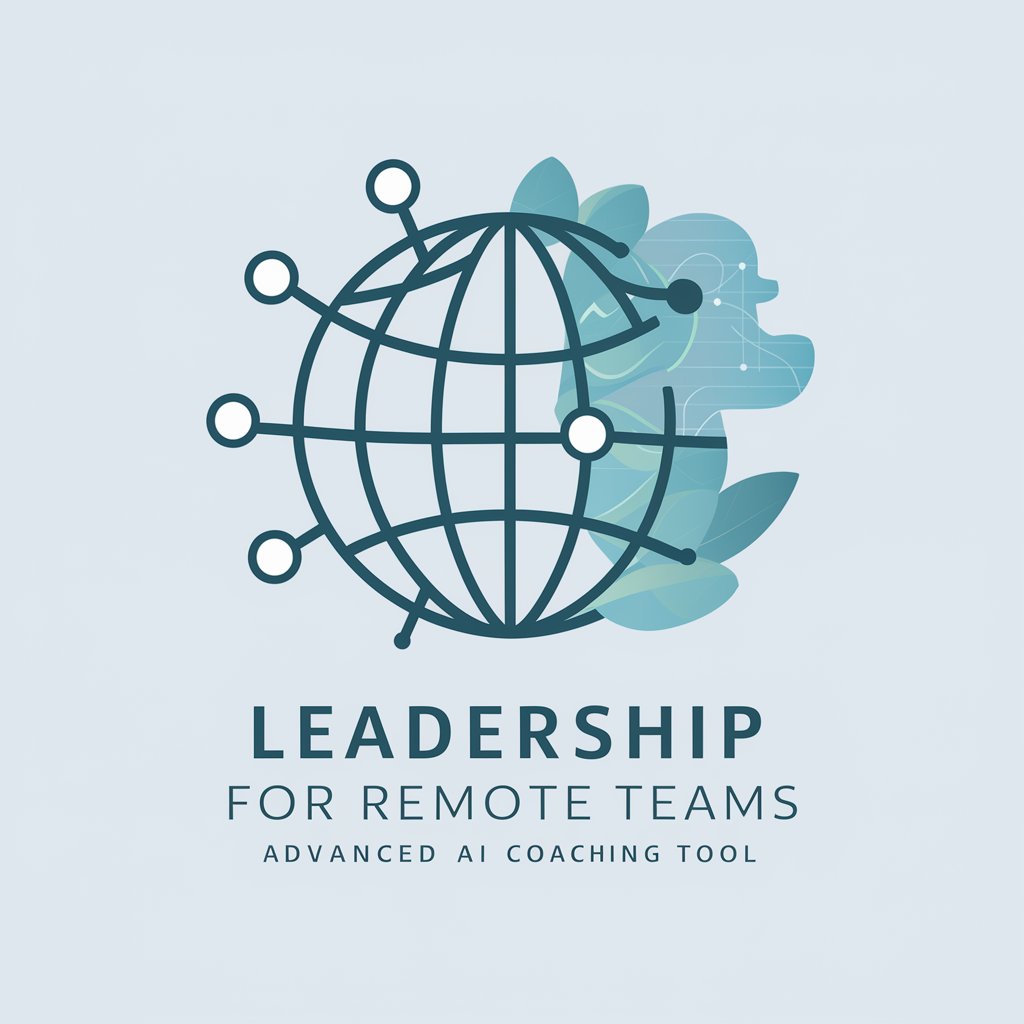Leadership for Remote Teams - Remote Leadership Tool

Welcome to Leadership for Remote Teams coaching!
Empower your remote team leadership with AI-powered insights.
How can remote leaders build trust within their teams?
What are the best practices for managing remote performance?
How can emotional intelligence enhance remote team dynamics?
What strategies can be used to improve virtual collaboration?
Get Embed Code
Leadership for Remote Teams: An Overview
Leadership for Remote Teams is designed to navigate the challenges and leverage the opportunities presented by remote work environments. This model emphasizes flexibility, communication, trust, and the use of technology to manage and inspire dispersed teams. It goes beyond traditional leadership models, requiring leaders to cultivate new skills such as emotional intelligence, adaptability, and an understanding of digital tools. Examples include creating inclusive communication channels to bridge geographical gaps and employing project management software to maintain visibility and accountability. The purpose is to ensure leaders can effectively manage, motivate, and support their teams, regardless of physical location. Powered by ChatGPT-4o。

Core Functions and Applications
Building Trust and Communication
Example
Utilizing regular video check-ins and encrypted messaging platforms
Scenario
To foster a sense of community and transparency among remote team members, ensuring everyone feels connected and informed.
Performance Management
Example
Employing project management tools for task tracking and performance analytics
Scenario
To monitor progress, set clear expectations, and provide timely feedback, facilitating a culture of continuous improvement.
Cultivating an Agile Mindset
Example
Promoting adaptability, resilience, and ongoing learning through virtual training sessions
Scenario
To prepare teams to respond swiftly to change, embrace challenges as opportunities for growth, and innovate within the remote work environment.
Emphasizing Emotional Intelligence
Example
Conducting workshops on empathy, active listening, and emotional regulation
Scenario
To enhance leaders' ability to understand and manage their emotions and those of their team members, leading to more effective and harmonious remote work dynamics.
Leveraging Technological Advancements
Example
Adopting and training on the latest communication and collaboration tools
Scenario
To streamline workflows, facilitate seamless teamwork across different time zones, and ensure data security and privacy in a virtual setting.
Target User Groups
Remote Team Leaders
Managers and leaders of virtual teams who need to navigate the complexities of remote work, including managing diverse, dispersed teams, maintaining productivity, and fostering team cohesion.
HR Professionals and Organizational Development Specialists
Individuals responsible for developing remote work policies, training programs, and support systems that promote effective remote leadership and team dynamics.
Project Managers
Project managers overseeing remote teams who require tools and strategies for project planning, execution, and team collaboration in a virtual environment.
Entrepreneurs and Startup Owners
Business owners who operate remotely and seek to build and lead high-performing remote teams to drive their business forward in a competitive market.
Educational Leaders and Trainers
Professionals in the field of education and training who are looking to adapt their leadership and teaching strategies to the remote and hybrid learning environments.

Using Leadership for Remote Teams
Start with a free trial
Initiate your journey by visiting yeschat.ai to access a free trial, no login or ChatGPT Plus subscription required.
Explore features
Familiarize yourself with the platform's features, focusing on tools designed for effective remote team management, communication enhancement, and performance tracking.
Set objectives
Define clear objectives for your leadership development and team performance. Utilize the platform's resources to create a roadmap tailored to these goals.
Engage with the content
Deep dive into the extensive resources provided, including best practices, case studies, and interactive tools to enhance your remote leadership skills.
Implement and review
Apply the strategies and tools in your daily leadership practice. Regularly review team progress and adjust your approach based on feedback and outcomes.
Try other advanced and practical GPTs
VarWizard
Simplify Coding with AI-Powered Variable Naming

PhotoRename
Simplify Your Images with AI-Driven Renaming

Genie GPT
Unleash Imagination with AI-Powered Stories

AEGPT
Empowering Creativity with AI-Powered After Effects Expertise

Banner Creator
Crafting Your Brand's Digital Front Door

Research Summarizer
AI-Powered Precision in Research Summarization

Auto Advisor
Your AI-Powered Car Shopping Assistant

Psychiatry Board Prep
Empowering Psychiatry Learning with AI

Conteur de Rêves
Dream up magical bedtime stories

Stock Trend Analyst
Decipher Market Trends with AI

ChalkZone Sports Analytics
Empower Your Game with AI-Driven Insights

Iterative text Improver
Elevate Your Writing with AI Precision

Q&A on Leadership for Remote Teams
What is Leadership for Remote Teams?
Leadership for Remote Teams is a digital platform designed to empower leaders of virtual teams with tools, strategies, and insights for effective remote management, communication, and performance optimization.
How can I improve communication with my remote team?
Enhance communication by utilizing digital tools for real-time interaction, establishing clear communication protocols, and fostering an environment of transparency and openness to encourage feedback and collaboration.
What strategies can help maintain team productivity remotely?
Maintain productivity by setting clear goals, using project management tools to track progress, fostering a culture of accountability, and ensuring regular check-ins to address challenges and celebrate achievements.
How can I build trust within my remote team?
Build trust by consistently demonstrating reliability, creating opportunities for team engagement, recognizing achievements, and promoting an inclusive culture that values open communication and mutual respect.
What are the challenges of remote leadership and how can they be overcome?
Challenges include maintaining team cohesion, ensuring productivity, and fostering a strong culture. Overcome these by leveraging technology, promoting work-life balance, and implementing regular feedback and development opportunities.
